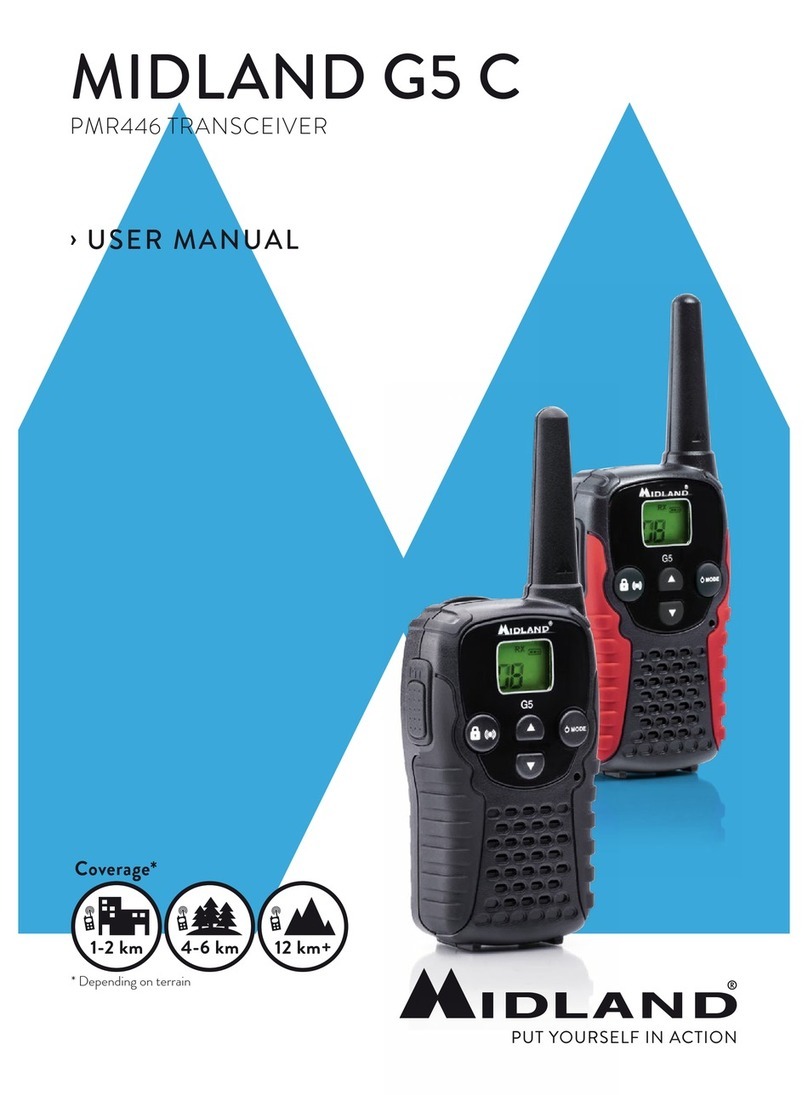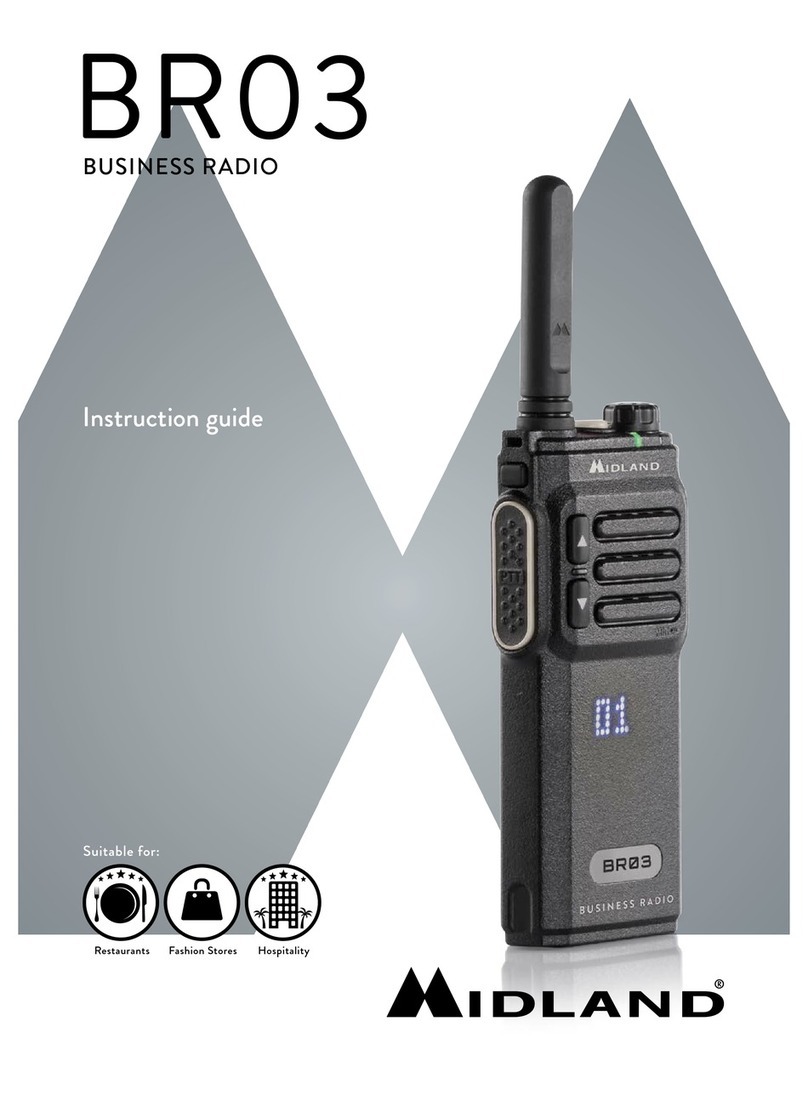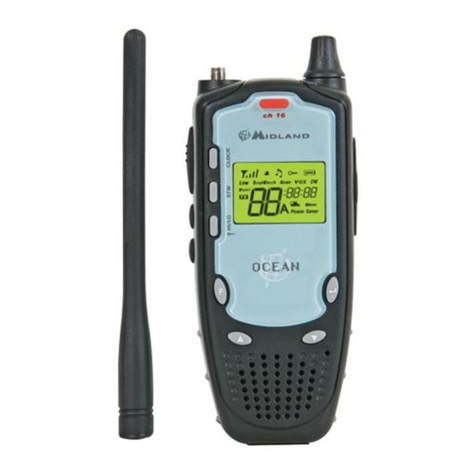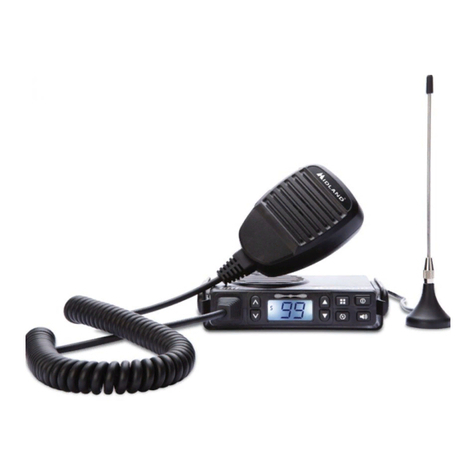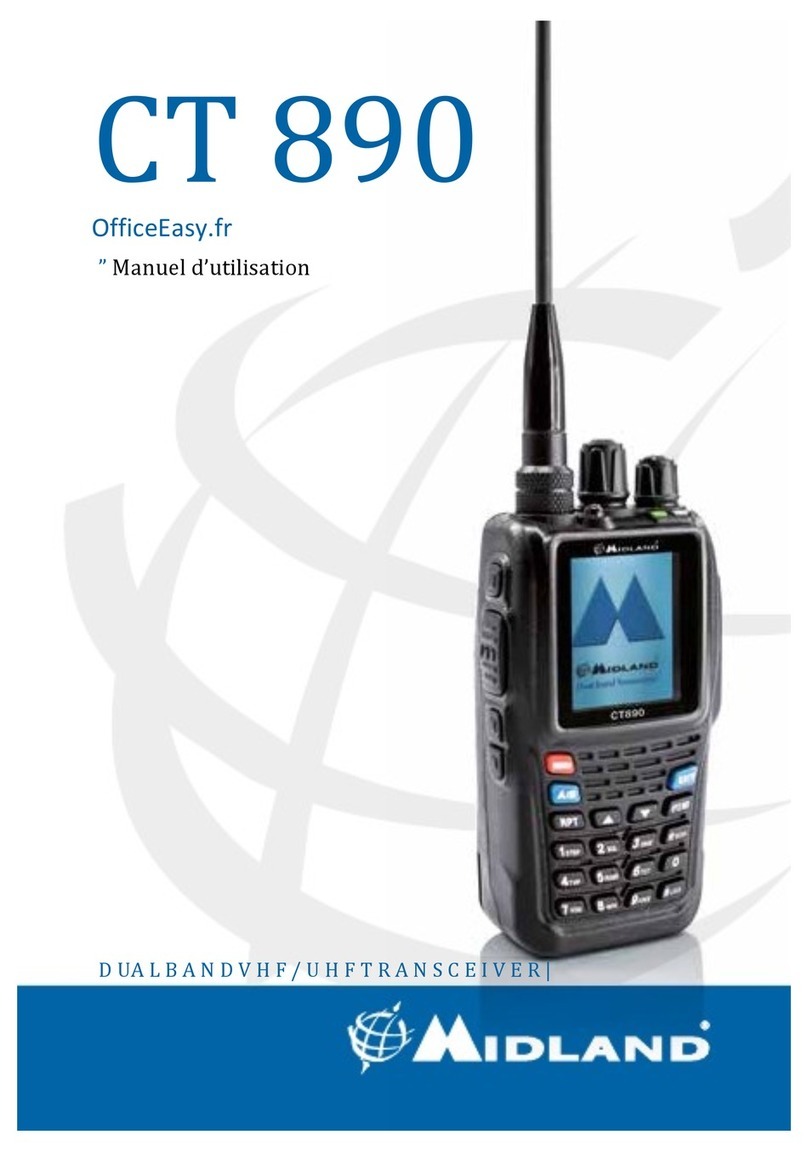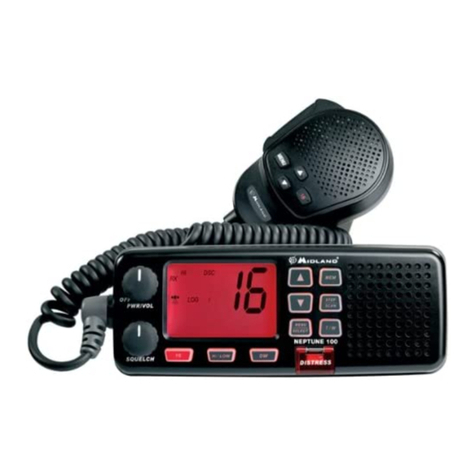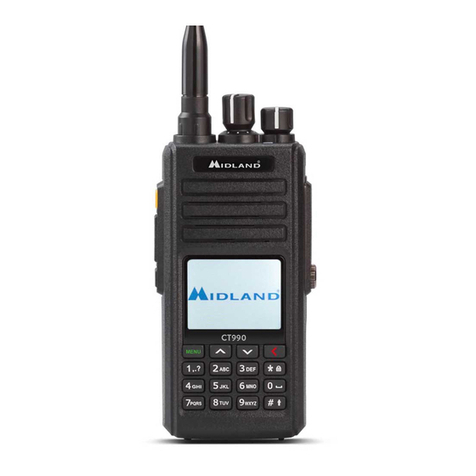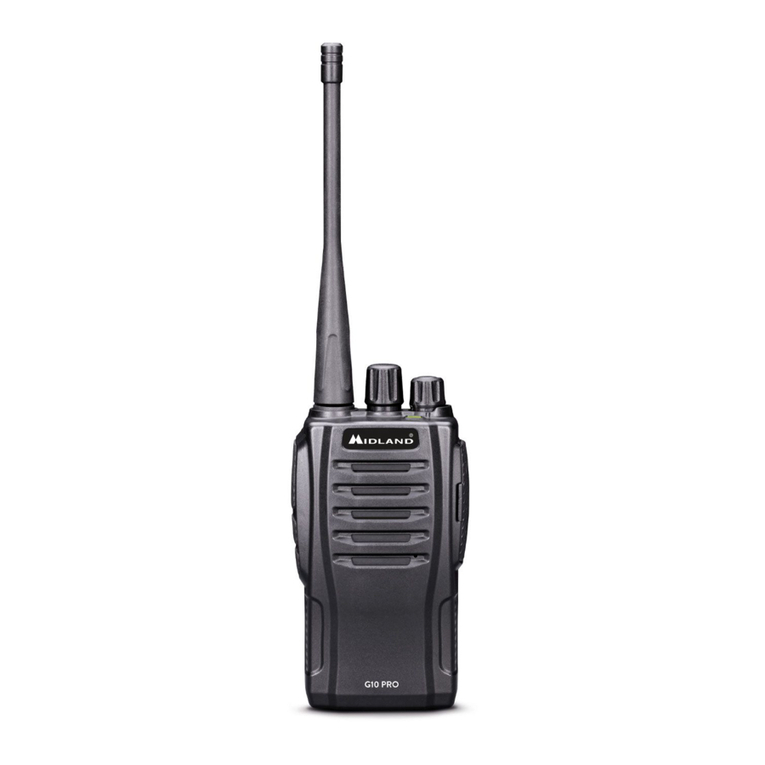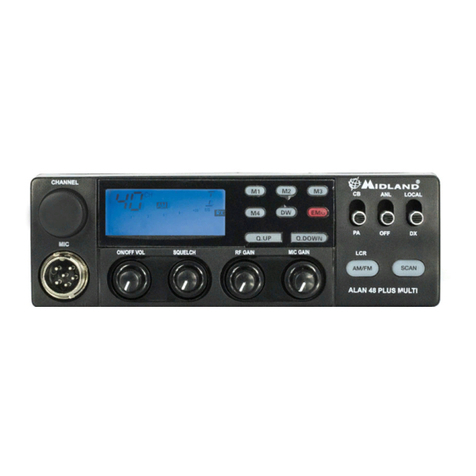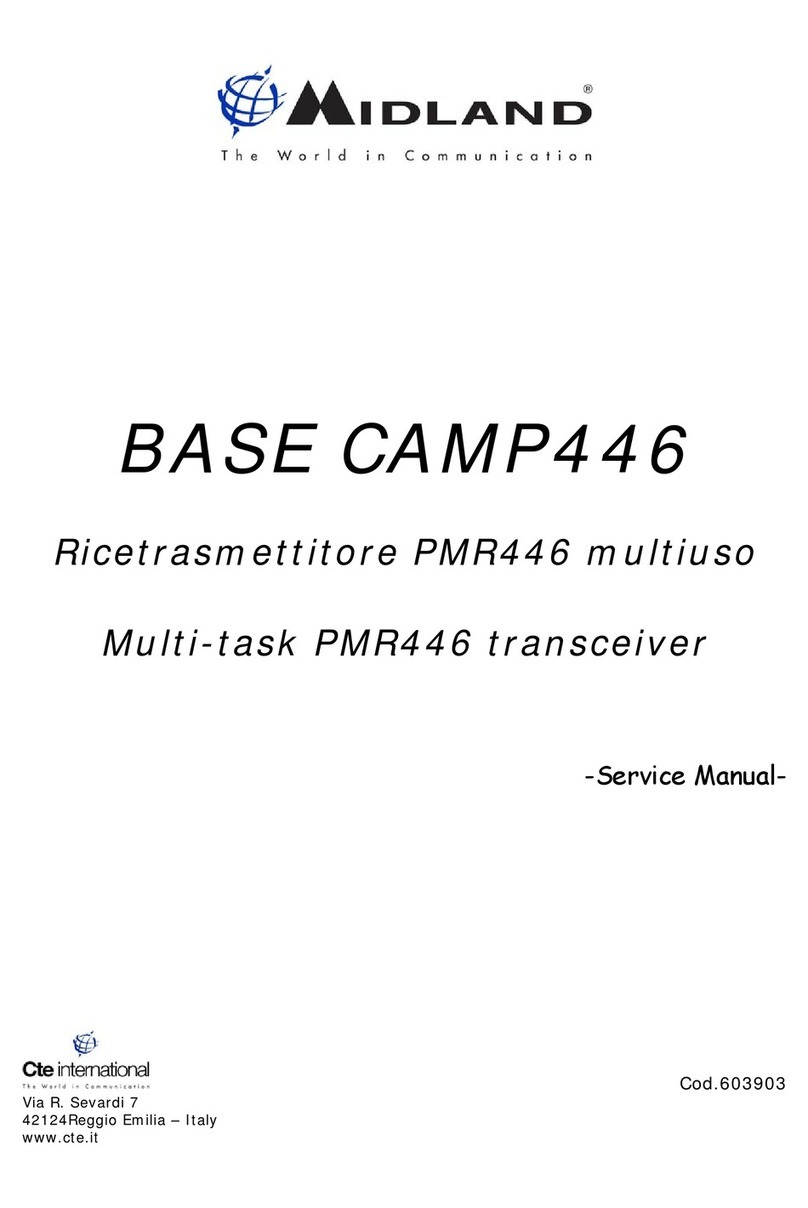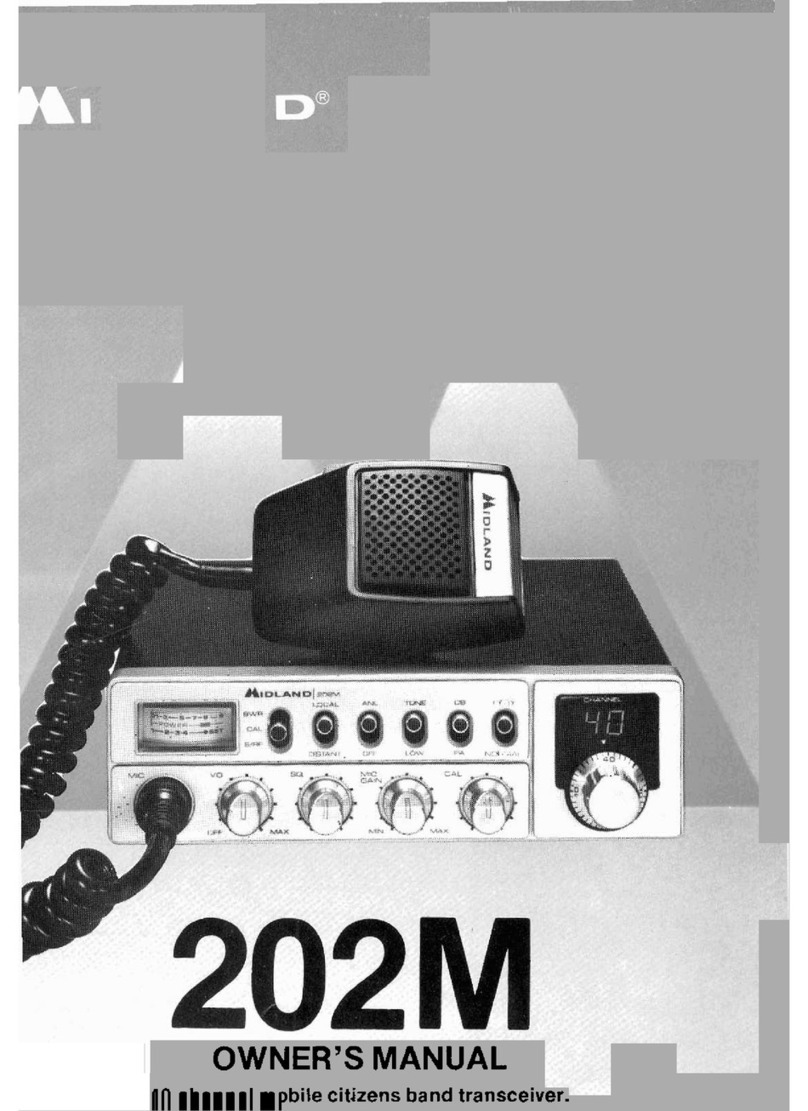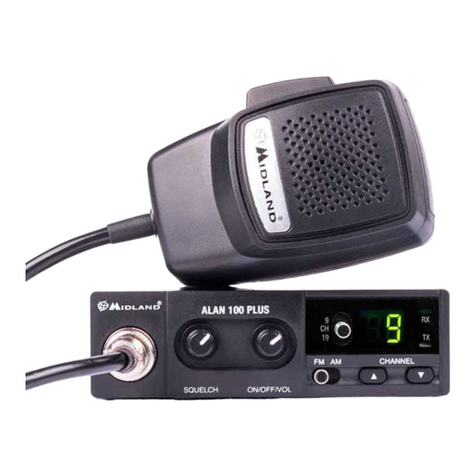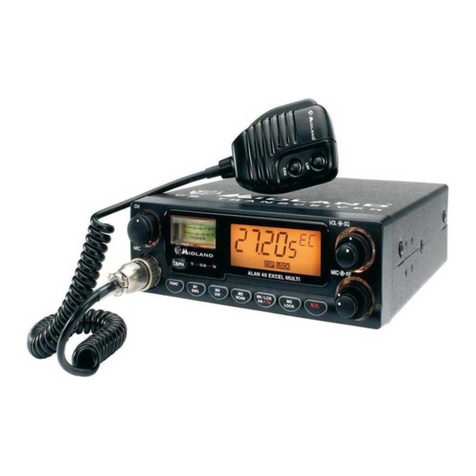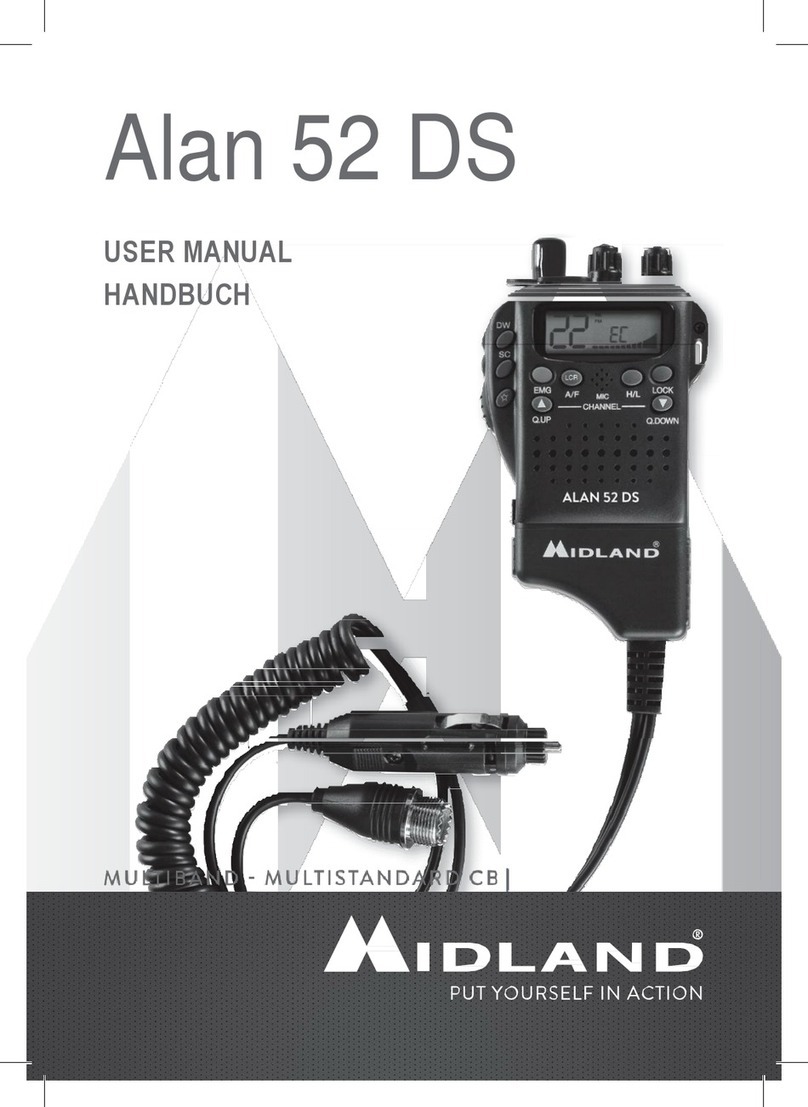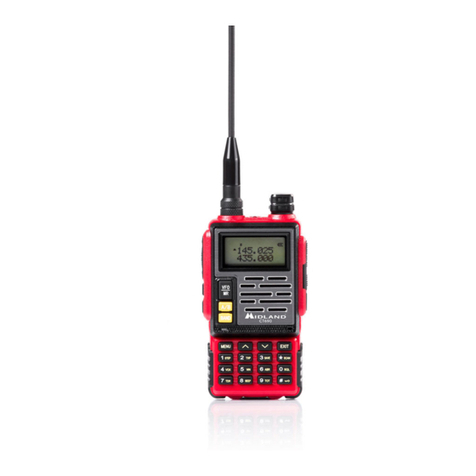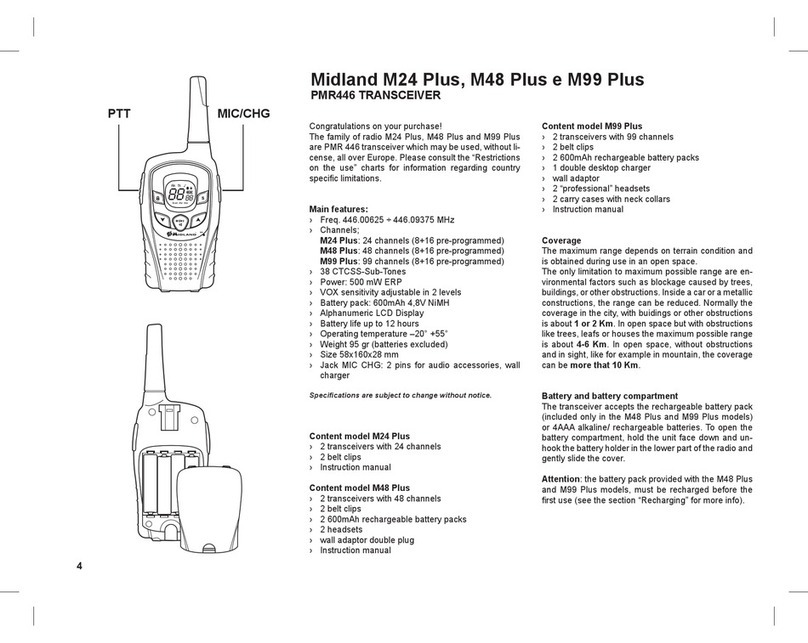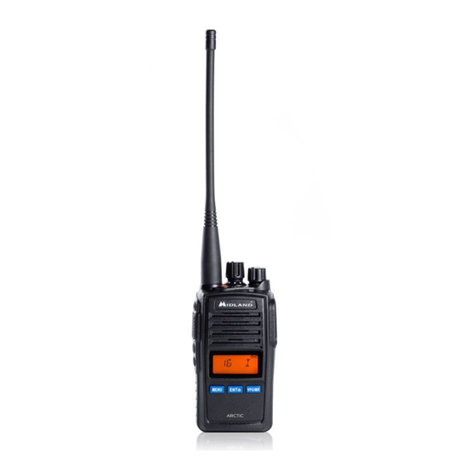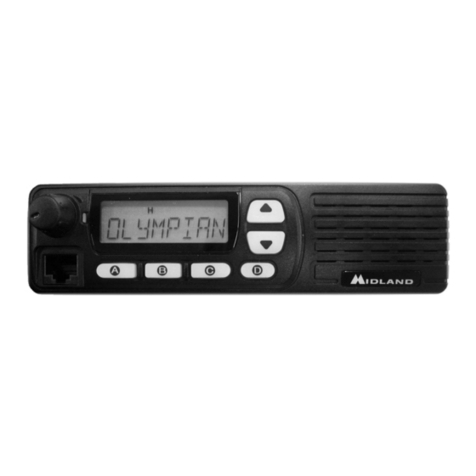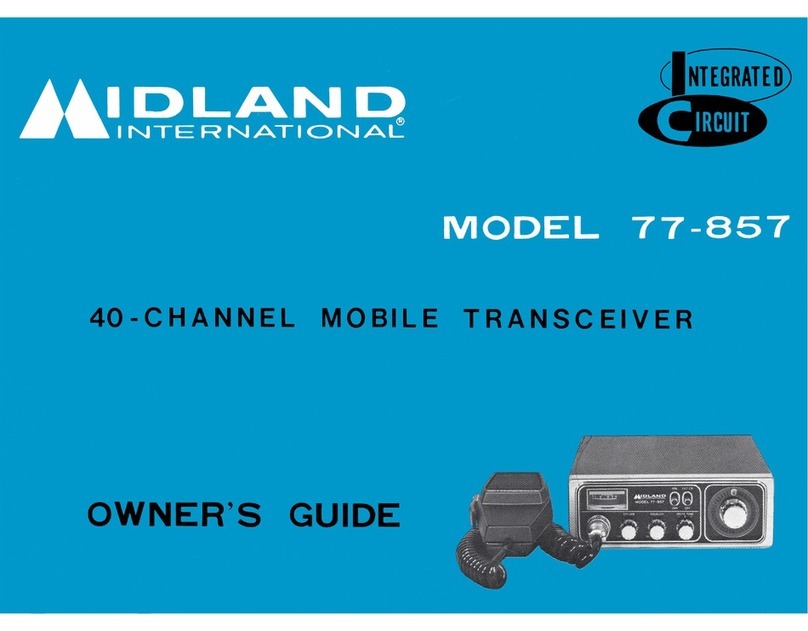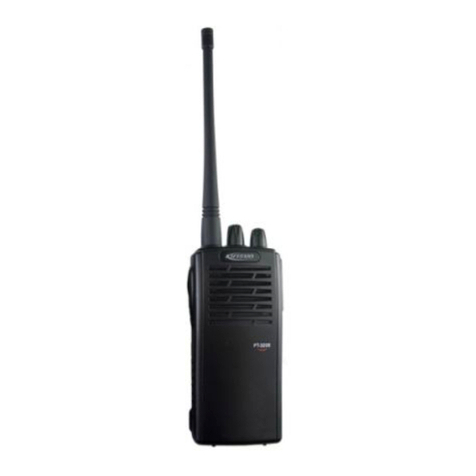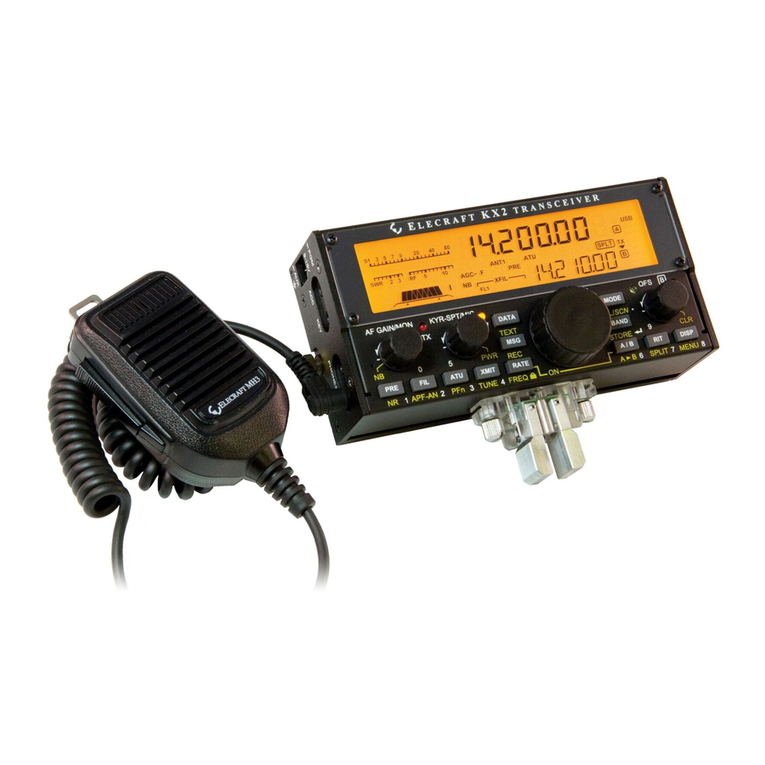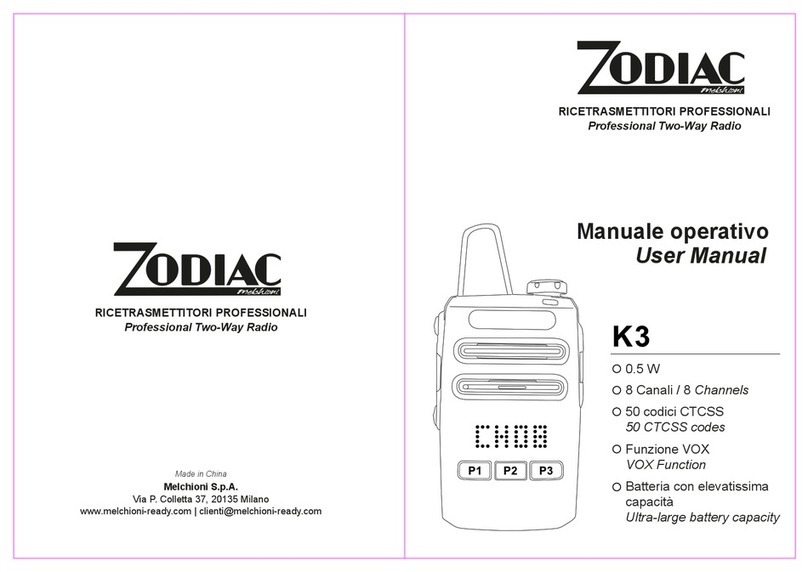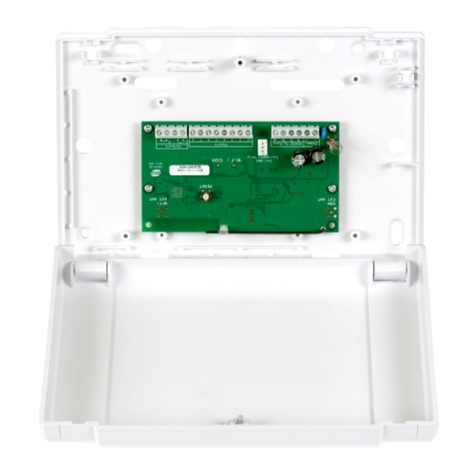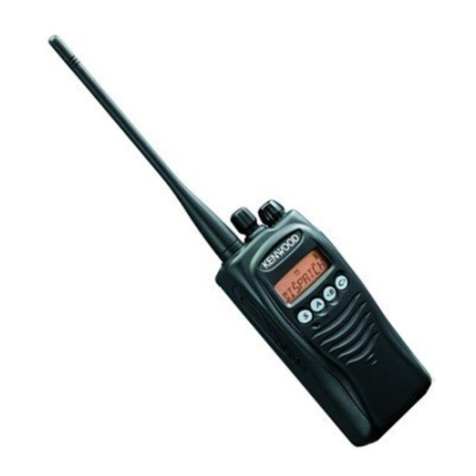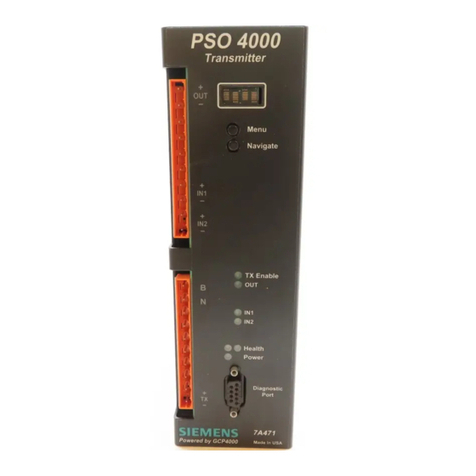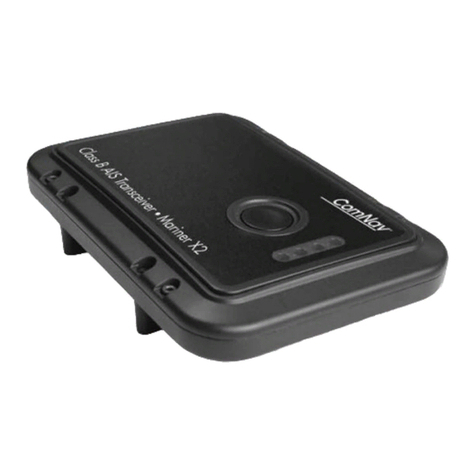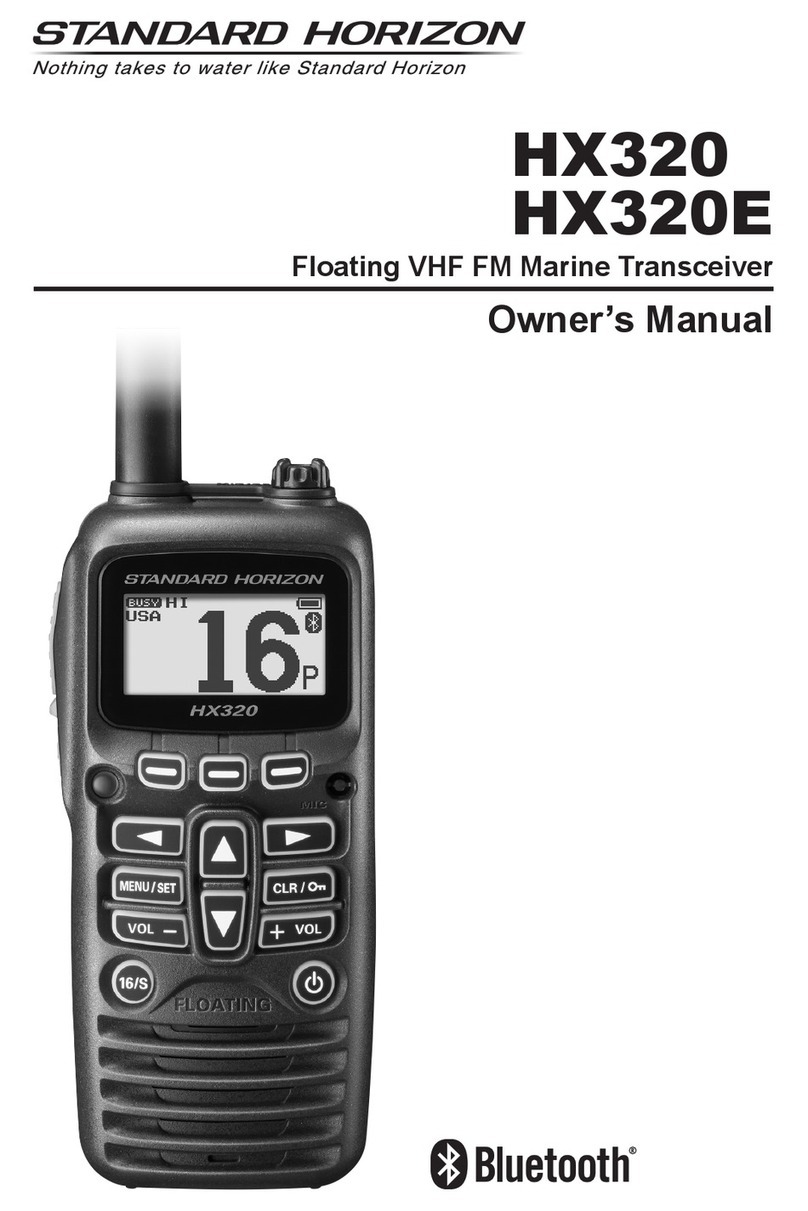
M Zero Instruction Guide | 7
ANTENNA SYSTEM
AO FGGJDJFOU mobile antenna system is not limited to the antenna. The
transmission DBCMF as well as the vehicle are important factors in the
total antenna system. Therefore, you must use the correct type of
DPBYJBM DBCMF and mount the antenna securely in a position that will
give you optimal results. Use coaxial cable with an impedance of 50
Ohms. We suggest type RG 58"U for lengths under m or RG "6 for
longer lengths. Generally speaking,keep the length of the DPBYJBM
DBCMF to a minimum. The above JOGPSNBUJPO is as important for
reception as for the transmission. If a mismatch exists between the
antenna and the receiver, the excellent sensitivity and signal-to-noise
radio of the receiver circuit will be defeated.
Suggestions
A few general rules should help you to install any mobile antenna pro-
perly.
• During operation, it must be vertical, and rigid enough to remain
vertical when the vehicle or boat is in motion.
• Mount it as far as possible from sources of noise (ignition system,
gauges, etc.) and keep the transmission DBCMF away from these
noisesources.
• An antenna mounted in a boat requires a good ground connection.
This can be either a metal hull or a ground made of tin-foil or copper
sheeting.
This ground should cover an area of at least 1 m2 or more. Be sure the
transceiver also has an adequate ground. There are many types of mobile
CB antennas: a full quarter-wave length whip, a centerloaded whip, top
loaded whip and the base loaded type are typical. A vertically polarized
whip antenna is best suited for mobile service. It is omnidirectional. If it’s
the loaded type, you will find it a physically shorter antenna. But, for gre-
ater efficiency the 2.5 m long, full quarter-wave whip is better. Antenna
length is directly related to efficiency.
Generally, the longer it is, the more efficient will be.
There are many possible antenna locations on a car.
Four of the most popular are shown and discussed on the following.
Roof Mount
In this position the antenna radiates equally in all directions. Since the
